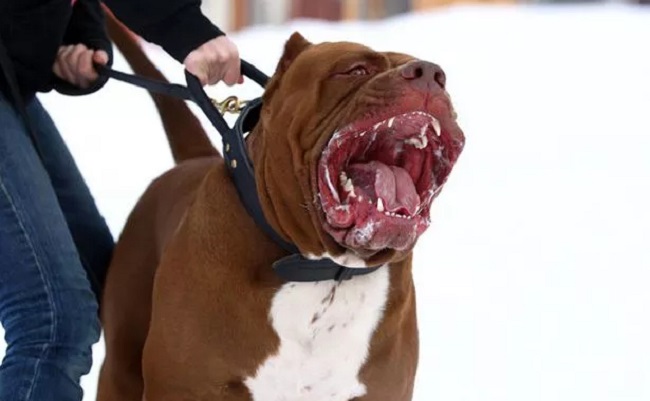Bite force is a topic of fascination and curiosity, often associated with some of the animal kingdom’s most formidable predators. Among these predators, the Pitbull is known for its impressive bite force.
In this detailed article, we will delve into the concept of bite force, specifically focusing on Pitbull bite force.
We will explore the top 10 facts about Pitbull bite force, the factors influencing it, dispel myths and misconceptions, discuss responsible ownership, and touch on bite prevention. Let’s unlock the secrets behind this powerful canine trait.

Understanding Bite Force
Bite force refers to the amount of pressure exerted by an animal’s jaws when it bites. It is typically measured in pounds per square inch (PSI) or newtons.
Bite force can vary significantly among different animal species and even within breeds of dogs. It is influenced by various factors, including jaw anatomy, muscle strength, and evolutionary adaptations.
Pitbull Bite Force: Top 10 Facts
- Impressive Strength: Pitbulls are often recognized for their powerful bite force, which can range from 235 to 250 PSI. This places them among the breeds with a strong bite.
- Variable Within the Breed: Not all Pitbulls have the same bite force. Bite force can vary among individual dogs due to factors like genetics and physical conditioning.
- Ancestral Traits: Pitbulls have a history of being bred for activities like bull-baiting and later dogfighting. These activities may have contributed to the breed’s strong bite force.
- Jaw Anatomy: The structure of a Pitbull’s jaw, characterized by a broad and powerful build, contributes to their bite force.
- Muscle Power: Strong jaw muscles, along with a determined and tenacious temperament, can enhance a Pitbull’s bite force.
- Locking Jaw Myth: Contrary to a common myth, Pitbulls do not have locking jaws. They do, however, possess a determined and unyielding bite once they latch onto something.
- Responsibility is Key: Pitbull owners bear the responsibility of ensuring their dogs are properly trained, socialized, and well-behaved to prevent any incidents involving their bite force.
- Positive Training: Positive reinforcement training methods can help Pitbulls become well-behaved pets. Professional trainers can assist owners in achieving this.
- Myths and Misconceptions: Pitbulls have been subject to many myths and misconceptions over the years. These stereotypes can be harmful and perpetuate misunderstandings about the breed.
- Bite Prevention: Responsible ownership, proper training, and education about dog behavior are crucial for bite prevention. Understanding canine body language can help avoid situations where a bite may occur.
Factors Influencing Pitbull Bite Force
Several factors influence a Pitbull’s bite force:
- Genetics: The genetic makeup of an individual dog plays a significant role in determining its bite force potential.
- Physical Conditioning: A well-exercised and physically fit Pitbull may exhibit more muscular strength, potentially affecting its bite force.
- Age and Health: A Pitbull’s age and overall health can impact its bite force. Young, healthy dogs may exert more force than older or less healthy individuals.
Myths and Misconceptions
Pitbulls have been surrounded by numerous myths and misconceptions, many of which relate to their bite force. It’s essential to separate fact from fiction when discussing these dogs:
- Locking Jaws: As previously mentioned, Pitbulls do not have locking jaws. Their tenacity in biting may give the false impression of a “lock.”
- Inherent Aggression: While Pitbulls can be strong and determined, they are not inherently aggressive. Their temperament is influenced by upbringing, training, and socialization.
- Unpredictable Behavior: Any dog, regardless of breed, can exhibit unpredictable behavior if not properly trained and socialized. Responsible ownership plays a crucial role in behavior.
Responsible Ownership and Bite Prevention
Responsible ownership is the cornerstone of bite prevention. Here are some key principles for responsible Pitbull ownership:
- Training: Proper training and socialization from a young age can help Pitbulls become well-mannered pets.
- Supervision: Always supervise interactions between your Pitbull and other dogs, animals, or people, especially if your dog has a history of aggressive behavior.
- Positive Reinforcement: Use positive reinforcement training methods to encourage good behavior and discourage undesirable behavior.
- Education: Educate yourself about dog behavior and body language to understand your Pitbull’s cues and prevent potential aggression triggers.
- Spaying/Neutering: Consider spaying or neutering your Pitbull, as it may reduce aggressive tendencies.
The Bite Force of Other Animals
While Pitbulls have an impressive bite force, they are not the only animals known for their powerful jaws:
- Saltwater Crocodile: The saltwater crocodile holds the title for the most powerful bite force in the animal kingdom, with a jaw strength of up to 3,700 PSI.
- Hyena: Spotted hyenas possess a bite force of around 1,100 PSI, making them formidable scavengers.
- Hippopotamus: Hippopotamuses can exert a bite force of approximately 1,800 PSI, a surprising fact given their herbivorous diet.
In Conclusion
Pitbulls, like any other breed, can be loving and well-behaved pets when raised in a responsible and caring environment. Understanding their bite force, the factors that influence it, and the importance of responsible ownership are essential steps in fostering a positive relationship with these remarkable dogs.
By debunking myths, promoting education, and advocating for proper training, we can ensure a safe and harmonious coexistence with Pitbulls and all dog breeds.
